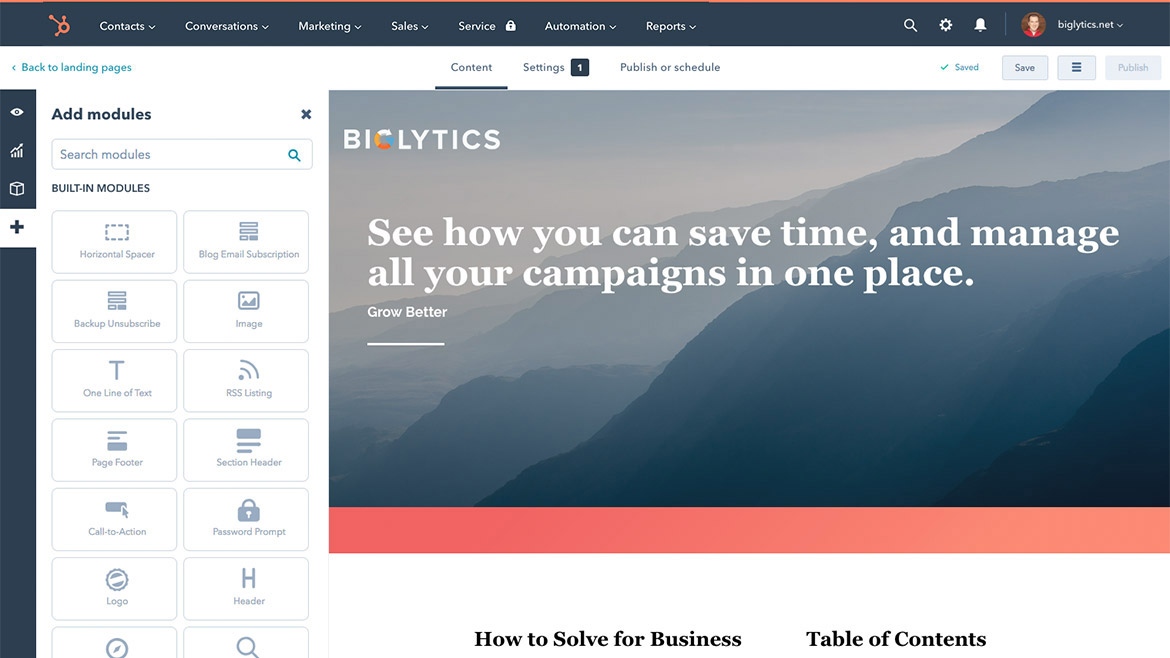Personalise your website with dynamic content
Personalise your website with dynamic content
Get weekly
HubSpot Updates
Netflix makes different recommendations to you and your friends. When you visit Amazon, you are shown the products most relevant to you. Your Spotify account makes recommendations based on what you've listened to in the past. So, why does your website look the same to every visitor?
Website visitors expect to see the content that's relevant to them. If they're existing customers, then they'll be more interested in support articles and add-ons than your product overview. First-time visitors will want to learn what your business does and how it can help them. A static website forces your visitor to go looking for the content relevant to them – and that's not what today's buyers want.
We live in an age of smart technology that adapts to our needs and interests. Is your website keeping up with your audience's expectations?
What is dynamic or smart content?
Personalised website content enables marketers to customise web pages and/or email copy, CTAs and design, based on the user and specific known (collected) data about them.
Personalised content provides users with a customised experience, offering them better content that is more suited to their needs.
Why use smart content?
Personalised content offers a unique experience for your customers and is a proven tactic to increase conversions. 80% of consumers are more likely to make a purchase when brands offer personalised experiences.
Plus, 67% of consumers think it’s important for brands to automatically adjust content based on current context.
The problem with personalised content
Historically, personalising the content on a website has been an expensive proposition. The average website CMS (such as WordPress, Drupal or Squarespace) simply wasn't built for the purpose of showing personalised content, based on your company's knowledge of each visitor. To achieve a genuinely personalised website, you would need to invest in enterprise-level systems from Adobe, IBM or Sitecore – and that doesn't come cheap.
So, you're left with a choice of building a website that's the same for everyone and forces the visitor to do the work of discovering the right content, or you could pay a huge price tag for a system that is designed for multinational corporations with deep pockets and a team of technical experts.
For most businesses, that's not much of a choice. In fact, according to Neil Patel, 59% of surveyed marketers stated that a lack of technology was the reason behind not personalising content.
When we speak to companies about their website, they're looking for something that's easy to use. They don't want to spend hours fiddling with confusing interfaces that look nothing like the finished page. Professional marketers want a website platform that is easy to use, easy to update, fast, secure and powerful.
The HubSpot CMS: smart content powered by your contacts database
The HubSpot CMS takes away the need to compromise. Combining the power of HubSpot's free CRM with advanced website creation tools, your website can offer a personalised experience for all your visitors. Creating a new page with the editor is easy and intuitive, ensuring that new pages can be added to your site without the need for a developer.
Your website is hosted entirely on HubSpot's fast, powerful CDN and is protected by rock-solid security, including SSL by default.

HubSpot’s range of website personalisation options - or smart content - is vast, from the basic first name tokens in email subject lines (for example, ‘Complete your order, John Smith!’), through to customised modules for landing pages templates.
HubSpot’s smart content modules offer the power to display different versions of your content - images, copy, CTAs - based on the viewer category. This is often known as dynamic or adaptive content. You can create smart rules based on vistor’s location or language, device type, demographic, or referral source.
Smart content and personalised content are important lead nurturing tactics.
An important note: there is a strategic and functional difference between personalisation tokens and smart content: personalisation tokens do not require segmentation to use them, where as smart modules do - you do this by creating contact lists based on the specific custom or default contact property.
Default contact properties such as name, email, or company, as well as more granular information about individual contacts, such as recent sales email open date, recent deal amount and first page seen.
Custom contact properties enable marketers to collate further information on their users, which can then be used to create tailored, buyer’s journey stage appropriate content.
Personalisation ideas for ecommerce
- Recently viewed items for returning customers
- Suggested products based on demographic information
- Tailored offers or discounts
- Accurate delivery fees and times based on user’s location
Content personalisation ideas for B2B
As with any content, it’s vital that your personalised content aligns to where your customer is in the buyer’s journey.
Personalisation examples for B2B companies can be based on demographic, contextual or behavioural information. Email offers ample opportunities here, including:
- Email workflows that offer helpful content related to - but not duplicating - what the user has already downloaded from you is one example; likewise, setting up automated (behavioural) trigger email sequences based on a contact’s online behaviour.
- If your business offers an online tool, for example, sending users tips and advice directly related to how they are individually using the tool.
Are you ready to start generating more leads with a website that uses smart content and includes a full CRM? Get in touch today to book a free consultation.
Our content includes affiliate links. This means that we may receive a commission if you make a purchase through one of the links on our website. This will be at no cost to you and helps to fund the content creation work on our website.